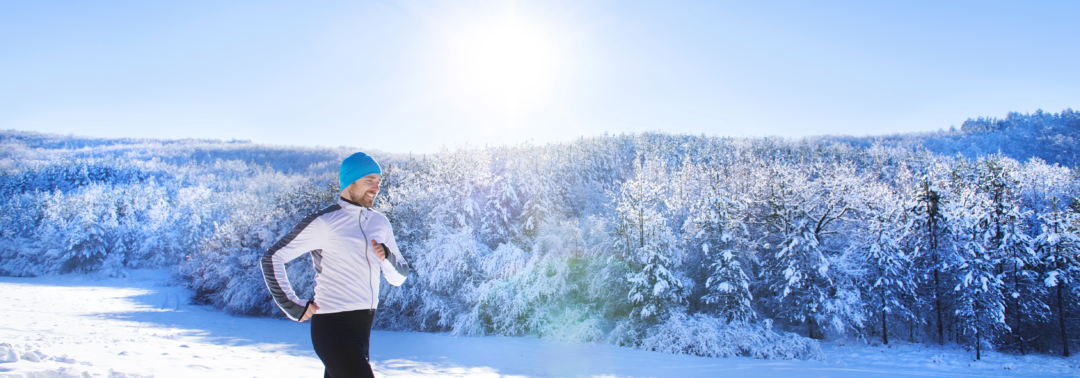Regular exercise is one of the most important parts of any recovery plan. Studies in recent years have shown that exercise improves the symptoms of many mental health issues that commonly overlap with addiction, including depression, anxiety, and ADHD. There is even promising early evidence that regular exercise can directly help with addiction by reducing your risk of relapse. Exercising outdoors, especially in nature can multiply the benefits, not least because of the sunshine and fresh air. And many people prefer the simplicity of running, biking, or walking in their neighborhoods to going to the gym. However, as winter approaches and the weather gets cold, it can dampen your enthusiasm for outdoor exercise. Here are some tips for exercising when it’s cold outside.
Dress for success.
There are a number of factors to consider when dressing for cold-weather exercise; the first is warmth. What you wear depends on just how cold it is. If it’s just a bit chilly, you can usually get away with just having most of your skin covered. If it’s in the 50s, for example, your core will warm up quickly as you exercise, but your hands and ears may still get raw, so consider some light gloves and a hat or headband to cover your ears. As the temperature drops further, you need more precautions. Dressing in layers is typically the way to go. Your base layer should wick sweat away from you and stay relatively dry. Avoid cotton for the base layer because cotton holds onto moisture. A fleece is a good second layer and if it’s snowing or raining, a waterproof outer layer is a good idea.
Also keep in mind that if it’s getting colder, it’s also getting darker. Try to wear brighter colors so you’re more visible to passing cars or anyone who might be looking for you–if you got lost hiking, for example. Reflectors or lights may also be a good idea.
Spend extra time warming up.
Warming up before exercising in cold weather helps you in two main ways. First, it raises your body temperature so the cold doesn’t bother you as much. Second, it reduces your risk of injury. Your muscles and connective tissues are more brittle when it’s cold outside–think of the o-rings on the Challenger. If you’re running on snow or ice your footing may be uncertain too. Take a few extra minutes to warm up, more time than you think you need. The rule of thumb is to break a sweat before doing anything more strenuous. The warmer you are, the more pliable your tissues are and the less likely you are to be injured.
Shift your focus.
At a certain point, it just doesn’t make sense to exercise outside unless you’re specifically training for a cold-weather sport. If the temperature drops dangerously low, it’s probably a good idea to either take a rest day or head into the gym. If it’s going to be extremely cold for a while, it might be a good opportunity to shift your focus to strength training or indoor sports until the weather gets more tolerable.
Just because it’s cold outside doesn’t mean you have an excuse to be lazy. Think ahead and take sensible precautions. If you use the weather as an excuse to stay on the couch, you’re only cheating yourself. By taking up the challenge, you prove to yourself what you’re capable of. At Tree House Recovery of Portland, Oregon, exercise is an integral part of our addiction treatment program. We help our clients transform their bodies and minds to live a better life. Call us today at (503) 850-2474 to learn more about how we can help.



